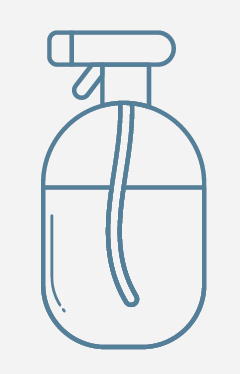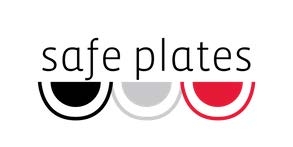COVID-19 Preventative Measures - Delivering for Mass Food Distribution
ID
FST-381-6NP
There are no documented cases of COVID-19 being contracted from food or food packaging, but there have been several instances at places where food is served or sold due to person-to-person transmission especially without face coverings. However, it is always important to follow good hygiene practices when handling or preparing food to prevent foodborne illnesses. If you are delivering and distibuting food to large groups of people consider food safety, physical distance, health and hygiene as well as cleaning and disinfecting best practices.
CARRYING OUT FOOD
- Ask people not to pick up food if they have symptoms of COVID-19. Try offering contact-less options.
- Crowds need to be managed in line, waiting and gathering areas
- Use ground markers to keep people six feet apart while in lines
- Consider having people sign up for time slots to visit to pick up food and ask they wait outside until their designated time
- Use online ticketing systems or walk up tickets
- Surfaces have shown to be a factor in transmission, although probably much less than person-to-person transmission
- Limit self-service or buffet style food distribution, package food ahead of time
- Provide oversight of food or beverage stations if they must be used
- Limit amount of single service items out at a time
- Disinfect areas as needed
PERSONAL HEALTH AND HYGIENE

- Before and during the mass food distribution, make it clear that masks and cloth face coverings are encouraged for all through various communication methods such as email, flyers and signs
- Alcohol-based hand sanitizer with 60% alcohol should be made available in various locations of the facility and for those delivering food
CLEANING AND DISINFECTING
- All items that could have been touched by people should be cleaned and disinfected frequently:
- Doors, doorknobs, handles, railings
- CDC recommends cleaning followed by disinfection as a best practice for prevention of COVID-19
- Use bleach or compounds listed on EPA List N, found at go.ncsu.edu/epacovid-19
- Household bleach may also be used at a concentration of 1000ppm for minimum of one minute
- 5 tablespoons (1/3 cup) bleach per gallon of water or 4 teaspoons bleach per quart of water
- Increase volunteers assigned to cleaning and disinfecting during peak times
DELIVERING FOOD
- Similar to takeout, delivering food to others helps maintain social distancing and reduces the number of touch points between preparation and serving of food Food should be labeled on how to be properly handle food with information such as:
- Refrigerate food as soon as possible. Do not leave outside of home
- Wash your hands and/or use hand sanitizer after handling food packaging
- Ensure vehicles and packaging are clean and sanitary, as dirty vehicles can be a source of cross-contamination Use good personal hygiene and wash hands frequently if you are delivering food to others
- Use insulated packaging, ice and freezer packs while food is in transit
- Coordinate food delivery when someone is home and maintain six feet apart

Stay informed: ext.vt.edu/covid-19updates
Updated August 26, 2020



Virginia Cooperative Extension materials are available for public use, reprint, or citation without further permission, provided the use includes credit to the author and to Virginia Cooperative Extension, Virginia Tech, and Virginia State University.
Virginia Cooperative Extension is a partnership of Virginia Tech, Virginia State University, the U.S. Department of Agriculture, and local governments. Its programs and employment are open to all, regardless of age, color, disability, sex (including pregnancy), gender, gender identity, gender expression, genetic information, ethnicity or national origin, political affiliation, race, religion, sexual orientation, or military status, or any other basis protected by law.
Publication Date
September 9, 2020



